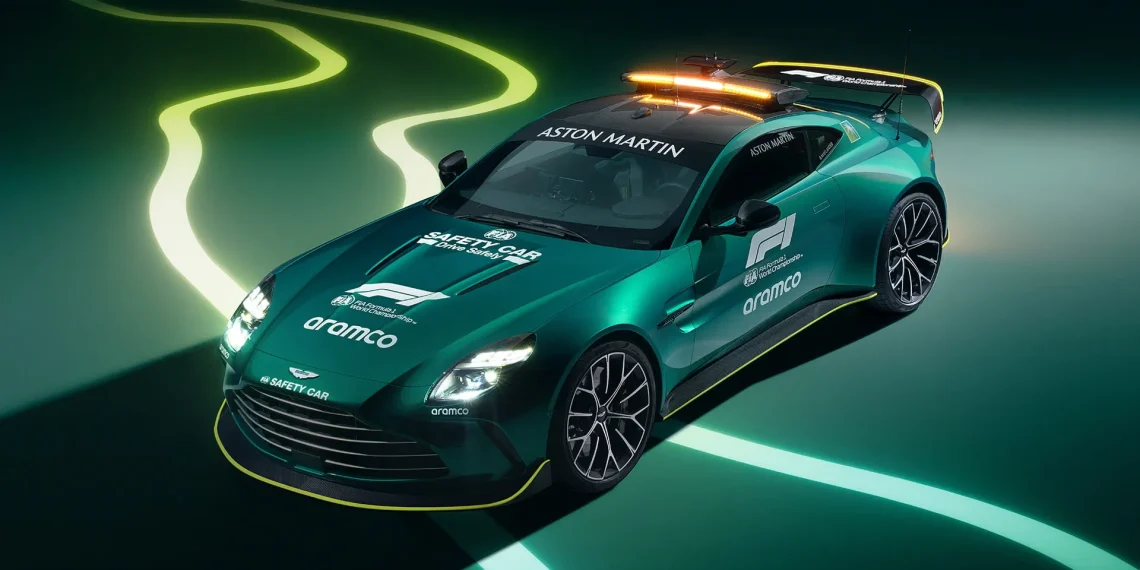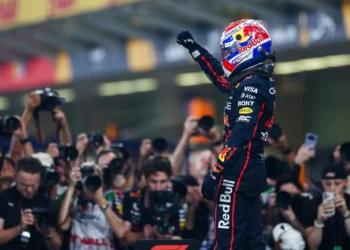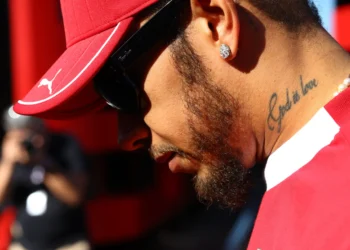The Safety Car is a vital tool in Formula 1, ensuring the safety of drivers, marshals, and officials when dangerous conditions arise on the track. Its presence can dramatically change the course of a race, but how does it work, and what are the specific regulations governing its use?
The Origins of the F1 Safety Car
The concept of the Safety Car in Formula 1 dates back to the 1973 Canadian Grand Prix, when a Porsche 914 was first deployed under torrential rain conditions at Mosport Park in Ontario. Its purpose was to neutralize the race, ensuring that drivers slowed down while emergency teams and marshals worked to clear accidents safely.
Over the years, the Safety Car has evolved into a high-tech machine, with the modern version being an Aston Martin DBX, used to minimize disruption to racing while maintaining safety. It has become a fixture of Grand Prix weekends, ready to intervene when conditions on track become too hazardous for drivers to continue at racing speeds.
When is the Safety Car Deployed?
The FIA’s Formula 1 World Championship Sporting Regulations outline strict rules for when the Safety Car can be deployed. According to the regulations, the Safety Car may only be used if “competitors or officials are in immediate physical danger on or near the track, but the circumstances are not such as to suspend the race.” This decision is made by the clerk of the course, though the race director has overriding authority on the matter.
When an accident or incident occurs, such as debris on the track or a car stopping in a dangerous position, the Safety Car is deployed to neutralize the race. This prevents further accidents by reducing the speed of all cars on track and ensuring they are grouped safely behind the Safety Car.
How Does It Work?
Once the Safety Car is deployed, drivers are immediately notified via race control and their teams. The race is neutralized, and all competitors must slow to a regulated speed while catching up to the Safety Car. Drivers are strictly prohibited from overtaking the Safety Car unless directed otherwise, and any violations, such as passing the Safety Car or rivals during this period, result in penalties.
For instance, Daniel Ricciardo received a three-place grid penalty after the 2024 Chinese Grand Prix for overtaking under Safety Car conditions, showing how strictly the rules are enforced.
During the Safety Car period, drivers must maintain single file and avoid overtaking, especially near the site of the incident, where marshals may be working on the track.
Ending the Safety Car Period
At some point, the Safety Car will either return to the pits, or the race may be suspended under red flag conditions if the track is deemed too dangerous to continue. According to Article 55 of the FIA regulations, the procedure for withdrawing the Safety Car involves several critical steps.
When conditions allow, race control may permit lapped cars to un-lap themselves and rejoin the back of the pack. This is to ensure a clean fight at the front and avoid lapped traffic disrupting the battle for the lead.
Once the track is clear, the Safety Car will return to the pits at the end of the following lap. At this point, the race leader essentially takes over the role of the Safety Car, controlling the pace of the field. The leader must maintain a steady pace and avoid erratic acceleration or braking, as doing so could create a dangerous situation for cars behind.
The race leader is not allowed to overtake the Safety Car until reaching the first designated “Safety Car line,” which marks the point where racing can resume. Similarly, other drivers cannot overtake each other until the leader has passed this line.
Strategic Implications
The deployment of the Safety Car can have significant strategic consequences in a race. It can bunch up the field, erasing any time gaps between drivers, and often leads to a flurry of pit stops as teams attempt to take advantage of the reduced speeds. A well-timed pit stop under the Safety Car can drastically alter a driver’s race strategy and position.
Additionally, the high probability of Safety Cars at certain tracks like Baku adds an extra layer of unpredictability. With narrow streets and tight corners, incidents are common, making the Safety Car a frequent and expected presence during these races.
Conclusion
The Safety Car plays a crucial role in ensuring safety in Formula 1, but its deployment also brings strategy, drama, and unpredictability to the race. From bunching up the field to forcing strategic pit stops, it can turn a Grand Prix on its head in an instant. Understanding the rules and procedures surrounding its use is key for both teams and fans to appreciate the strategic depth it brings to the sport.










